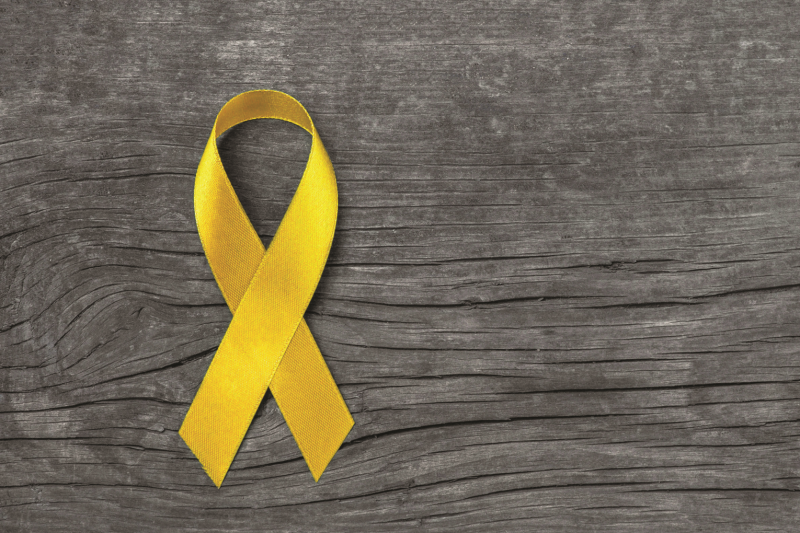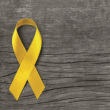Our role in suicide prevention
If you were walking down the street and saw a person clutch their chest and fall down in agony, would you stop to see if they needed help?
Of course you would. But what would you do if you saw someone pacing and looking upset on a bridge. Would you walk on? If you were walking down the street and saw someone crying, would you stop and ask if they needed help? Or even ask if they were ok... or ask if you could call someone for them?
Well, gee… that would be… uncomfortable, wouldn’t it?
What if I told you that something as simple as that – just reaching out -- could save a life? It’s true and is one of the reasons why I believe so passionately that suicide prevention is everyone’s responsibility. Given that September is Suicide Prevention Month, I felt particularly compelled to share this message.
The trends in suicide are alarming. If you think this doesn’t affect you, you’re wrong. There was an estimated 1.4 million suicide attempts in 2017 nationally and deaths by suicide number more than 47,000. Here in Maine the National Centers for Disease Control and Prevention report an increase of more than 27 percent between 1999 and 2016.
The really scary part is the fact that we are seeing increases pretty much across the board. I can’t help but worry that the pandemic will be a factor in these numbers rising. COVID-19 has led to increased isolation, feelings of hopelessness and stressors around basic necessities like food and shelter.
This makes our responsibility to prevent suicide even greater. In fact, in July this year you likely read the story of a BIW executive who died by suicide possibly due to increased depression experienced by the pandemic. Sadly, even those who provide care to COVID-19 patients are not immune as we saw with with Dr. Lorna Breen, the Emergency Room physician in New York who died by suicide in July.
The heartbreak experienced by family members and loved ones left behind is staggering but does not compare with the pain experienced by the person who feels suicide is the only way to end their suffering.
While we often see reports that state suicide is more prevalent among men and veterans, we are also reading about increasing numbers in children. In fact, last year we heard reports that suicide is the 2nd leading cause of death for those aged 15 to 24.
We have the ability to alter these trends if we learn how to interact with loved ones, the people around us or extend a helping hand and show compassion to a stranger.
Throughout my career I have had the opportunity to conduct trainings on suicide and have even taught my family and friends. This is personal for me. Last year my husband was able to talk to someone and prevent them from harming themselves. I have had people stop me in public and thank me for the skills I taught them that helped save a life.
It matters.
If you don’t believe me read about Kevin Hines, the man who jumped off the Golden Gate Bridge and lived to tell the tale in the book Cracked, Not Broken. He said if just ONE person had stopped to engage with him he would not have made that leap.
I urge everyone who is reading this to consider their responsibility to prevent suicide. We must do a better job accepting mental illness as a disease that is no different than having diabetes or experiencing a broken limb. I know the topic of mental illness and suicide makes you feel anxious but I also know that we can do better.
You can start by recognizing one of the biggest myths of suicide: Many believe if you talk about suicide you will cause it -- but it is the exact opposite.
Talking about a mental health concern can open the door to guiding someone to a resource that could prevent suicide. It can be the difference between a person living and dying. It doesn’t always work but many times it does.
There are many resources that can help. Here are a few of them:
The National Suicide Prevention Lifeline: 1-800-273-8255
The Lifeline Crisis Chat: https://www.suicidepreventionlifeline.org/gethelp/lifelinechat.aspx
Veterans Crisis Line: 1-800-273-8255 (Text 838255)
You may also choose to become trained in Mental Health First Aid which is available through the National Alliance on Mental Illness.
At the very least, become more comfortable raising topics around suicide and mental health and together, we can help prevent suicide.
LINDA DURST, M.D. serves as the Chief Medical Officer of Maine Behavioral Healthcare and is the Chair, Department of Psychiatry, Maine Medical Center. Maine Behavioral Healthcare is a leading provider of mental health services, with over 30 outpatient locations throughout southern, western and mid-coast Maine, as well as Spring Harbor Hospital, providing an integrated continuum of comprehensive, coordinated behavioral healthcare for Maine residents of all ages. Services can be accessed by calling 1-844-292-0111 or by visiting MaineBehavioralHealthcare.org
























